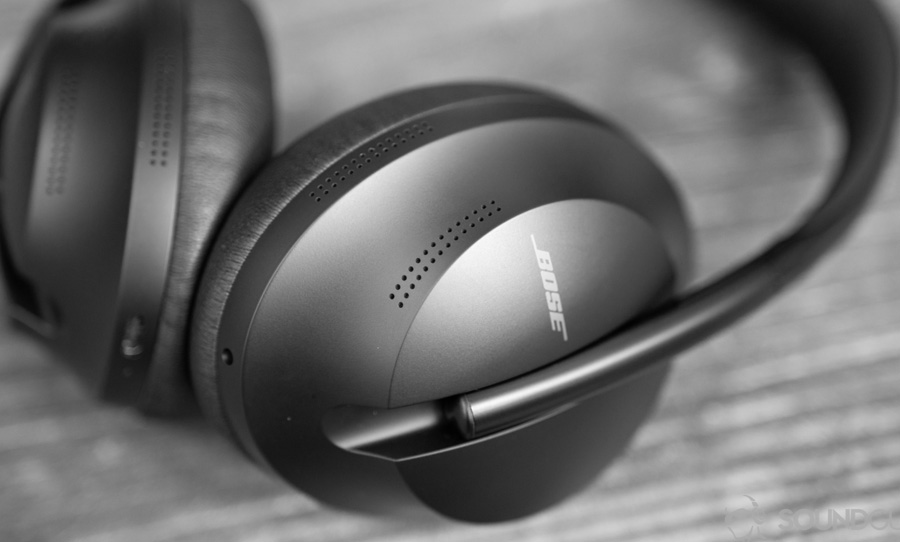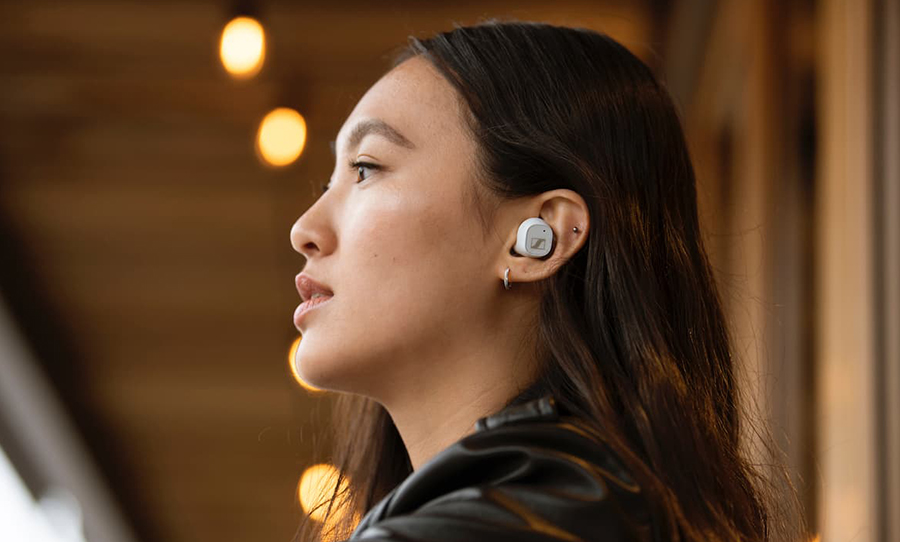From an aviation tool in the ’70s to a modern-day essential, noise cancelling headphones have made a huge impact. Here are 10 of the best models you can find.
It’s easy to crank up the volume to better hear your favourite playlist or podcast over the sounds of the city traffic or your morning train commute. And you would be kidding yourself if you think that the deep roars of a jet plane engine aren’t going to affect the intelligibility of your tunes or fatigue your hearing. Noise cancelling headphones to the rescue.
Let’s take a closer look at this special style of headphones, including 10 of the best pairs on the market today. The tale behind this technology — which we take for granted these days — is well worthy of exploration.

The 10 best noise cancelling headphones of 2022
by Jack Foley
Sony WH-1000XM4
Released earlier this year, there’s a strong case to be made that Sony’s WH-100XM4 are the best overall pair of active noise cancelling (ANC) headphones on the market. They simply have it all: attention to detail, comfort, long battery life and a reasonable price tag.
The WH-100XM4 replaced the hugely popular Sony WH-100XM3 (also a great option at a slightly lower price). There are multiple types of noise cancelling to choose from, giving you extensive control over the listening experience.
Visit Sony for more details.
Apple AirPods Pro
The AirPods Pro are true wireless (headphones that don’t require a cable or connector wire between the earpieces) rather than overhead. AirPod Pro’s biggest drawcards are their comfort and ease. They sit seamlessly in the ear while providing an immersive ANC listening environment.
The AirPods Pro’s also have impressive microphone capabilities that are perfect for taking calls on the go. Its automatic and immediate connectivity with other Apple products is also a handy feature.
Visit Apple for more details.
Bose Noise Cancelling Headphones 700
Certainly on the upper end of the price spectrum, this is a great choice for someone looking to spend a bit more in exchange for a superb experience. The 700’s use unique Bose technology that detects outside sounds and immediately produces an opposite signal to eliminate them out.
The earcups are designed to perfectly cocoon the ear, increasing sound quality and providing comfort. There are also extensive range controls, making the 700’s particularly convenient and tweakable.
Visit Bose for more details.
Sennheiser Momentum 3 Wireless
The Sennheiser Momentum 3 wireless possesses a stylish, classic design that lends them a retro feel. But don’t be fooled, these headphones are packed with cutting edge technology and features.
This premium product has advanced ANC technology that allows you to adjust noise cancellation depending on the environmental needs. The Moment 3 can be paired with the Sennheiser Smart Control app, giving the user extensive control over all aspects of the listening experience. It even lets you locate your headphones if they go missing.
Visit Sennheiser for more details.
Philips PH805
The standout feature of the PH805 is its longevity. It can last up to 30 hours with ANC switched on and even longer when deactivated. It also has rapid charge time. Both features would be ideal for those planning long-distance hauls or time away from charging access.
The PH805 has a simple, streamlined aesthetic. Considering its reasonable price, this a great middle-tier option for those seeking a little serenity.
Visit Phillips for more details.
Bose QuietComfort 35 II
Slightly cheaper than the Bose 700, the QuietComfort 35 II is another exceptional pair of headphones from these noise cancelling pioneers. The QuietComfort 35 II is smaller and lighter than the Bose 700, giving it a portability advantage.
The two models share many of the same features and both have Bose’s propriety technology that monitors and eliminates external sounds. This means there’s no need to compromise on audio quality or functionality if choosing between the two models.
Visit Bose for more details.
Beats by Dre Solo Pro
Like previous overhead Beats products, the Beats by Dre Solo Pro are big, chunky headphones with an emphasis on bass. Surprisingly, this is the first ANC effort from the headphone heavyweights.
The Beats Solo Pro has all features you’d expect from a premium pair of ANC headphones. Long life, ergonomic comfort and multiple listing modes to choose from.
Visit Beats by Dre for more details.
Audio-Technica ATH-ANC700BT
Though it doesn’t exactly have a catchy name, the ATH-ANC700BT from Audio-Technica is a high-quality pair of cans that delivers bang for buck. Part of Audio-Technica’s QuietPoint noise cancelling series, the ATH-ANC700BT use a four-microphone multi-feedback system to eliminate unwanted external sounds.
It isn’t as expensive as other premium ANC products, yet they still compete on comfort, audio performance and design. A fantastic option for those not wanting to break the bank.
Visit Audio-Technica for more details.
Shure AONIC 50
Easily the most costly device to appear on this list, the Shure AONIC 50 is a superior set of headphones for serious audiophiles. These headphones are exquisitely designed with elite fidelity.
An impressive battery life, with a superbly balanced frequency profile, and a variety of options when it comes to noise cancelling. These are a pair of cans for the listener who takes their sound seriously.
Visit Shure for more details.
Sony WF-1000XM3 True Wireless Earbuds
Sony’s WF-1000XM3 earbuds are one of the best true wireless ANC headphones currently available. They’re compact, ultra-portable, and yet, still have the ability to produce a magnificent sound.
The WF-1000XM3 earbuds sit effortlessly within in the ear. It also has a 24-hour lifespan so you can quite literally listen to them all day and all night long.
Visit Sony for more detail.
JBL E65BTNC
Consistent with other JBL products, the E65BTNC’s is a sturdy product at an incredibly affordable price. They have all the basic ANC features plus some added conveniences such as a built-in microphone.
These headphones are also seriously comfortable and lightweight. This is a perfect product for those seeking an entry-level pair of ANC headphones.
Visit JBL for more detail.
The history of noise cancelling headphones
by Jonathan Mendolicchio
Sound engineer and the founder of BOSE Corporation, Dr. Amar Bose first thought about reducing noise in headphones during a flight to Europe. Aeroplanes are a classic example of unwanted and uncomfortable noise pollution. Jet engines create up to 80dB of noise inside the cabin alone.
Listening to music and relaxing wasn’t an option for him because of the immense aeroplane engine noise, so he dedicated his time to conceptualise a way for headphones to interact with a user’s surroundings.
Bose designed a system that would use a microphone inside the headphones to pick up all the noise occurring in the atmosphere around the user. That noise would then be sent to electronics that generated an equal and opposite signal within a fraction of a millisecond that cancelled out the sound before it reached the eardrum of the listener. That was his theory, at least.
When he returned to his office in Boston, Bose formed a team of engineers to work on his design. It took over 15 years before they were able to make the concept work and even people within the company were sceptical about the concept.
Fast forward to 1989, BOSE was able to produce the first commercially available noise cancelling headphones aimed specifically for pilots, the BOSE Aviation Headset. It allowed pilots to better hear audio and communications over the roaring engine noise.
This technology was then brought to ground level and was commissioned by the NFL for coaches to better interact with their assistant and players to make faster and more effective decisions on the field over the dynamic sounds of the stadium’s ambience.
This revolutionary invention soon hit the consumer market and has kept somewhat of the same technology and design features from the original blueprints. The rapid innovation of digital technology has allowed for active noise cancelling to become cheaper, more adaptable and more user-friendly, however, with the addition of better microphones, smaller batteries, a more comfortable fit and sleeker designs.
How does Active Noise Cancelling Technology Actually Work?
If you’re familiar with sound engineering and studio recordings, phase cancellation is often one of the things that you’re actively avoiding.
Phase cancellation, otherwise known as destructive-interference, occurs when the wave on one signal is in its peak and the other is simultaneously in a trough. Because the peaks and valleys are out of sync, they work against each other rather than supporting each other.
The frequencies are cancelled out and, acoustically, it causes a weak sound. This occurrence is every recording engineer’s nightmare and is always avoided. However, this often unwanted occurrence is exactly how active noise cancelling (ANC) technology operates!
These headphones work via tiny microphones in the ear cup. They receive the outside sound before it hits your ears. Noise cancelling circuits note the frequency and amplitude of the sound and creates an anti-sound. This opposing frequency is mixed with the original sound and fed to the headphones speakers.
The Safety Issue
Ear safety is an important venture and ANC technology has done a lot to improve this as listeners can enjoy their favourite tunes at lower volumes.
Although this improves listening intelligibility with blocking out ‘noise’, active noise-cancelling technology has yet to fully realise the ability to completely cancel speech. Current active noise cancelling technology works best for frequencies below 500 Hz and is somewhat effective only up to about 1000 Hz.
Engine noise and traffic rumble are mostly below 500 Hz and so are greatly reduced or even completely eliminated through ANC. The important frequency range for understanding human speech, however, only starts at around 500 Hz. The most important bands for speech intelligibility are 500 Hz, 1000 Hz, 2000 Hz, and 4000 Hz.
With current top-of-the-line noise cancelling headphones, you can expect between 15 and 25 dB noise reduction from 500 to 2000 Hz, which is substantial but not nearly enough to eliminate speech.
The ear cups’ seal and isolation substantially attenuates voices and other higher-pitched noise. For speech blocking, active noise cancelling headphones rely mostly on passive sound isolation, not on their electronics.
Bringing it to the Wider Public
Although Amar Bose’s original ANC vision still reigns supreme, there has been a recent emergence of noise cancelling earbuds as opposed to headphones.
While still retaining the same technology, the infatuation of ANC earbuds brings the technology to the wider public – more accessible for your average consumer and perhaps preferred for commuters. This could be due to their small design, lightweight and non-intrusive nature.
Although BOSE first brought the over-ear technology to consumers, SONY was the first to bring ANC technology to the earbuds format. However, late in 2019 the monolithic tech company Apple released their own version with the Airpod Pro. This was perhaps the first time that the wider-public became aware of ANC technology due to the company’s reach.
Summing up this Noise
Noise-cancellation technology has come far from being introduced as a means for easier pilot communication to being a staple accessory for daily commuters. However, this technology can be applied to more than you may think.
ANC still functions without the need to listen to anything. This means you can use them as a kind of super-earmuff if you’re after peace and quiet more-so than hearing your favourite tunes with more clarity and less noise.
The technology has also been suggested by medical practitioners to patients who suffer from sleep disorders such as insomnia. Just by turning on the active mode on your ANC headphones, you’ll find the technology working to minimise the sounds of the cars outside or your parter’s snoring!
More so than anything else, they are an active contributor to ear safety by reducing loud levels of noise pollution and minimising ear fatigue.


